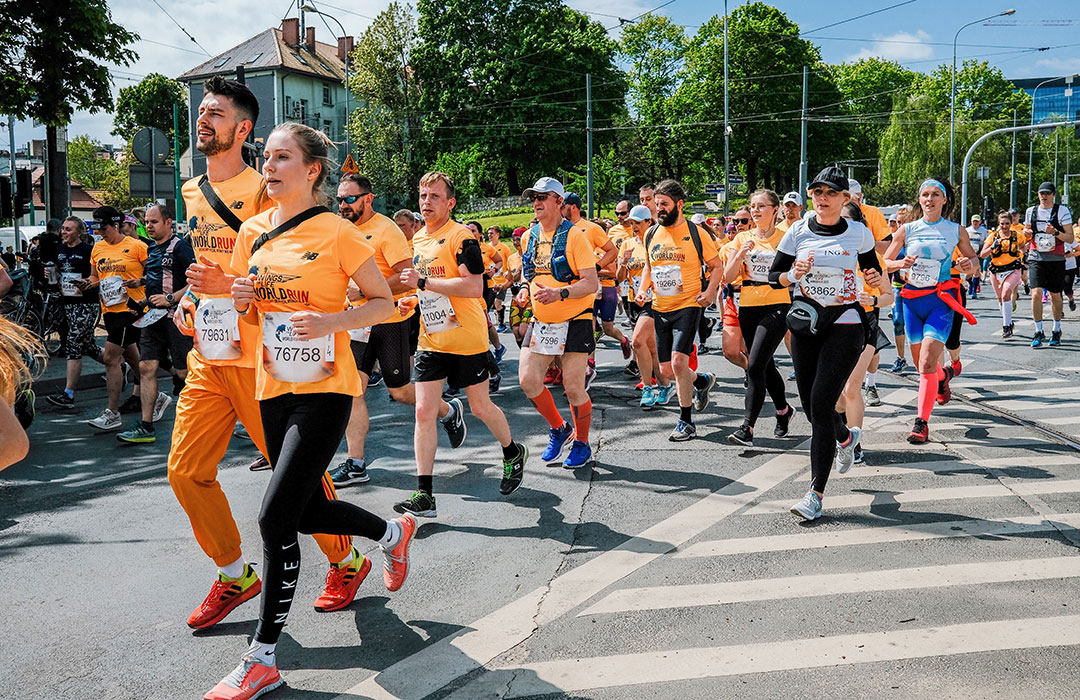Introduction
You’re not alone if you’ve ever wondered how many steps are to complete a marathon. Running a marathon is an impressive feat of endurance and determination, and understanding the number of actions taken during the race can provide valuable insights into the physical demands of this challenging endeavor. In this article, we will explore the topic of “How Many Steps in a Marathon” in detail, unraveling the distance covered and shedding light on the incredible journey marathon runners undertake.
How Many Steps in a Marathon?
A marathon is a long-distance race that covers a total distance of 26.2 miles or 42.195 kilometers. The number of steps taken during a marathon can vary depending on several factors, including the runner’s height, stride length, and running Efficiency. On average, a runner with a height of 5’8″ and an average stride length of 2.5 feet will take approximately 50,000 to 55,000 steps to complete a marathon.
It’s important to note that this estimate is based on average values, and individual variations can occur. Some runners may take slightly fewer steps due to a longer stride length, while others may take more steps due to a shorter stride length. Factors such as fatigue and pacing strategy can also influence the number of actions taken throughout the race.
Factors Affecting the Number of Steps
Several factors can affect the number of steps taken during a marathon:
1. Height and Stride Length
Taller individuals generally have a longer stride length, which means they cover more distance with each step. As a result, taller runners may take fewer steps to complete a marathon than shorter runners with shorter stride lengths.
2. Running Efficiency
Running Efficiency refers to the energy expended to cover a certain distance. Efficient runners can cover more ground with each step, reducing the number of steps required to complete a marathon. Factors contributing to running Efficiency include proper running form, muscle strength, and cardiovascular fitness.
3. Terrain and Course Conditions
The terrain and course conditions can also influence the number of steps taken during a marathon. Uphill sections and uneven surfaces may require shorter, more frequent steps, while downhill sections may allow longer, more efficient strides.
4. Fatigue and Pacing Strategy
As the race progresses, fatigue sets in, and runners may experience decreased running efficiency. Pacing strategy, or how runners distribute their effort throughout the race, can also affect the number of steps taken. Some runners prefer a more conservative approach, maintaining a steady pace, while others may start faster and adjust their speed as the race unfolds.
Tips for Efficient Marathon Running
To optimize your performance and reduce the number of steps taken during a marathon, consider the following tips:
- Maintain Proper Running Form: Focus on maintaining an upright posture, relaxed shoulders, and a slight forward lean. This helps promote efficient movement and reduces unnecessary energy expenditure.
- Strengthen Your Muscles: Engage in strength training exercises that target the muscles used in running, such as the quadriceps, hamstrings, calves, and core muscles. Strong muscles contribute to a better-running economy and overall Efficiency.
- Improve Your Cardiovascular Fitness: Regular cardiovascular exercise, such as running, swimming, or cycling, helps improve your cardiovascular fitness. A strong heart and lungs can supply oxygen-rich blood to your muscles more efficiently, allowing you to cover more distance with each step.
- Practice Cadence Control: Cadence refers to the number of steps you take per minute. Aim for a cadence of around 180 steps per minute, which is optimal for many runners. Increasing your cadence can help reduce the strain on your muscles and improve running efficiency.
- Gradually Increase Mileage: Gradually build up your mileage over time to allow your body to adapt to the demands of marathon training. This helps prevent overuse injuries and improves your endurance capacity.
- Listen to Your Body: Pay attention to any signs of fatigue or discomfort during training. Rest and recovery are crucial for preventing injuries and optimizing performance. If you experience persistent pain or injury, consult a healthcare professional.
Why Track The Number Of Steps In A Marathon?
Tracking the number of steps in a marathon may seem trivial, but it holds great significance for runners and fitness enthusiasts. Let’s delve into why it’s essential to monitor and analyze the steps taken during a marathon:
- The measure of Distance: The number of steps taken directly correlates with the distance covered during a marathon. By tracking steps, runners can estimate their progress and ensure they are on track to complete the total 26.2 miles. It is a tangible measure of the distance achieved, allowing runners to set goals and monitor their performance.
- Pacing Strategy: Monitoring steps can help runners establish and maintain an effective pacing strategy throughout the race. By understanding their average steps per mile, runners can adjust their speed and energy expenditure to ensure they have enough stamina to complete the marathon. Tracking steps enables runners to pace themselves efficiently, avoiding early exhaustion or burnout.
- Running Efficiency: Paying attention to the number of steps can provide insights into running Efficiency. By analyzing step count, runners can evaluate their running form, stride length, and overall movement patterns. Efficient running mechanics can help conserve energy, reduce the risk of injury, and improve overall performance. Tracking steps allow runners to identify areas for improvement and make necessary adjustments.
- Training Progress: Tracking and comparing steps to marathon steps during training runs can offer valuable information about training progress. By gradually increasing step count and monitoring improvements, runners can ensure they build the endurance and fitness level required for a marathon. It is a metric to gauge training effectiveness and make informed adjustments to their training plan.
- Motivation and Accountability: Tracking steps can be a source of inspiration and accountability. By monitoring progress and striving to achieve step goals, runners can stay motivated throughout their marathon training journey. It provides a tangible measure of effort and progress, offering a sense of accomplishment with each step.
- Data Analysis: Gathering step data during a marathon and analyzing it afterward can provide valuable insights. Runners can identify patterns, trends, and areas for improvement by studying their step count data alongside other performance metrics such as pace, heart rate, and cadence. This analysis can guide future training strategies and optimize performance in subsequent races.
Tracking the number of steps in a marathon goes beyond a mere numerical count. It holds significance in distance measurement, pacing strategy, running Efficiency, training progress, motivation, and data analysis. By paying attention to steps, runners can enhance their marathon experience and confidently achieve their goals.
The Best Ways To Measure Your Steps
When it comes to marathon training or simply tracking your daily steps, it is essential to have a reliable method to measure your steps. Let’s explore some of the best ways to measure the number of steps you take accurately:
- Fitness Trackers: Fitness trackers like smartwatches or activity bands have become increasingly popular for step tracking. These wearable devices use built-in accelerometers to detect your movement and estimate the number of steps taken. They provide real-time feedback, allowing you to monitor your daily progress.
- Smartphone Apps: Many smartphone apps offer step-tracking features, utilizing the device’s built-in accelerometer and gyroscope. These apps can track your steps directly from your phone, making them a convenient option for those who prefer not to wear additional devices.
- Pedometers: Pedometers are small, portable devices specifically designed to count steps. They can be clipped to your waistband or carried in your pocket. Pedometers detect vertical movement and provide a simple, reliable way to track your steps.
- GPS Watches: GPS watches track your running distance and pace and often include step-tracking features. These watches use GPS technology to measure your outdoor runs accurately and can provide a comprehensive overview of your training progress, including step count.
- Mobile Health Apps: Many apps like Apple Health or Google Fit include step-tracking functionality. These apps utilize the sensors in your smartphone to count your steps. They often integrate with other health and fitness data, giving you a holistic view of your physical activity.
- Online Step Trackers: Various online platforms and websites offer step-tracking tools. These platforms allow you to manually enter your step count or sync data from your fitness tracker or smartphone app. They provide visualizations and progress charts to help you stay motivated and track your steps over time.
Remember, step tracking accuracy can vary depending on the device or method used. Choosing a reliable method that suits your preferences and consistently uses the same method for consistent tracking is essential.
Frequently Asked Questions (FAQs)
-
How long does it take to complete a marathon?
The time it takes to complete a marathon varies depending on individual fitness levels and goals. Elite runners can finish a marathon in under two hours, while recreational runners typically aim to complete it within four to six hours.
-
Can walking be included in a marathon?
Yes, walking can be included in a marathon. Many participants adopt a run-walk strategy to conserve energy and reduce fatigue risk. Finding a pacing strategy that works best for your needs and goals.
-
How can I track the number of steps during a marathon?
Various wearable devices, such as fitness trackers and smartwatches, can track the number of steps taken during a marathon. These devices use accelerometers and algorithms to estimate step counts based on movement patterns.
-
Are there shorter alternatives to a full marathon?
Yes, there are shorter alternatives to a full marathon, such as half marathons (13.1 miles) or 10K races (6.2 miles). These options allow individuals to experience the joy of distance running without committing to the total marathon distance.
-
Is it possible to complete a marathon without training?
While it is technically possible to complete a marathon without training, it is not advisable. Training is essential for building the endurance, strength, and mental resilience required to complete a marathon successfully.
-
Can I run a marathon if I have a medical condition?
If you have a medical condition, it is essential to consult with your healthcare provider before embarking on marathon training. They can provide guidance based on your specific condition and help determine whether marathon running is safe.
Conclusion
In conclusion, a marathon is a challenging race that covers 26.2 miles or 42.195 kilometers. The number of steps taken during a marathon can vary depending on height, stride length, running Efficiency, and course conditions. Following proper training techniques, focusing on running Efficiency, and listening to your body can optimize your performance and successfully complete a marathon. Remember, the journey of 26.2 miles begins with a single step!




